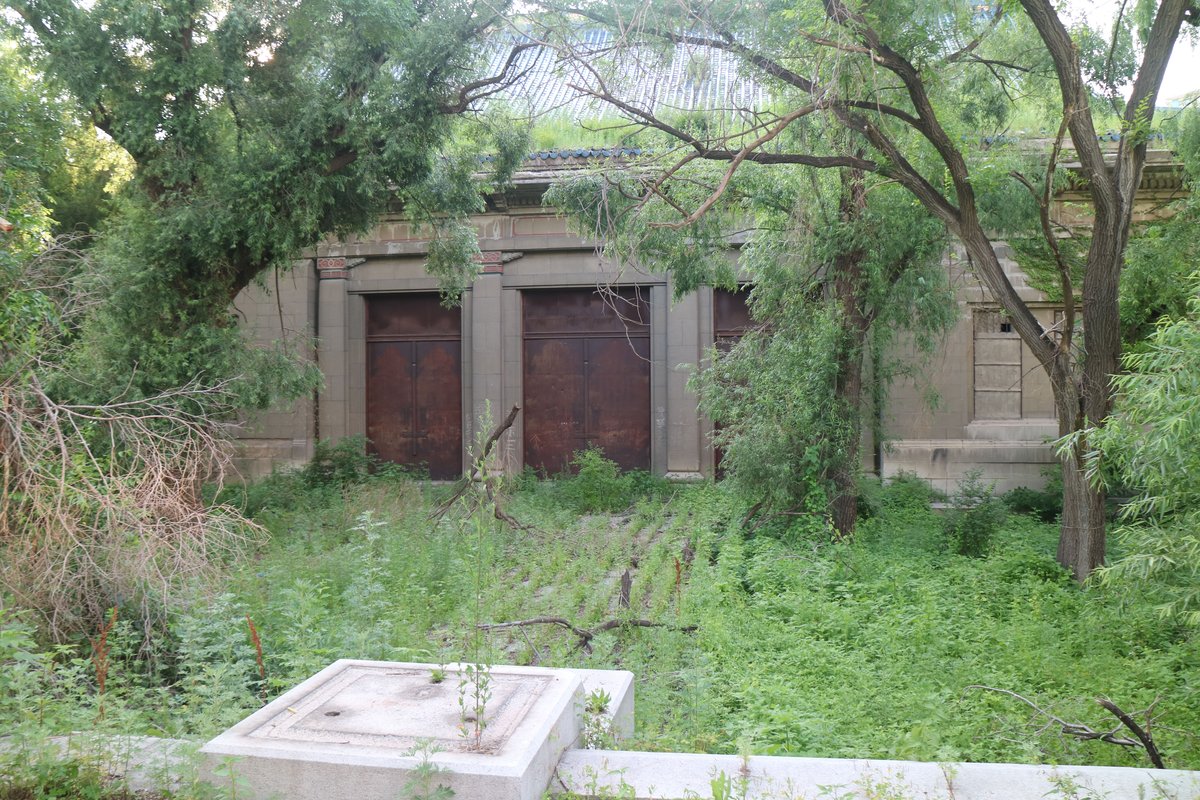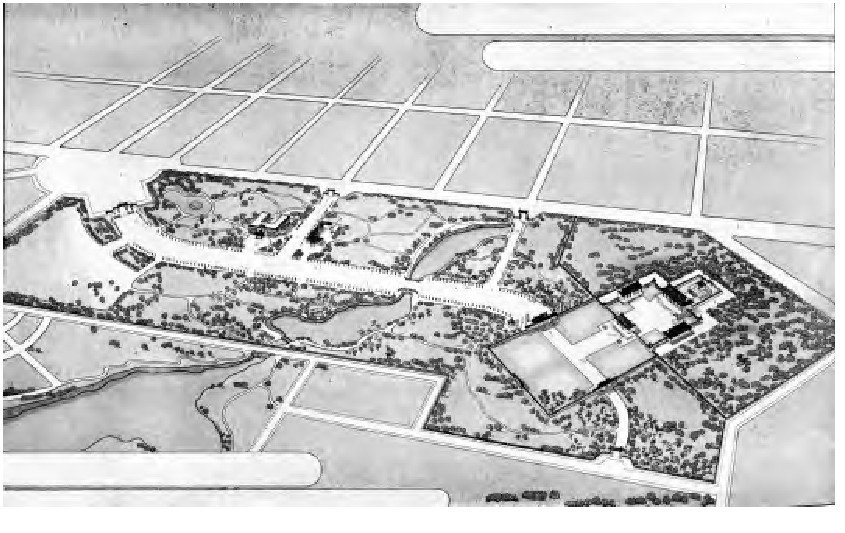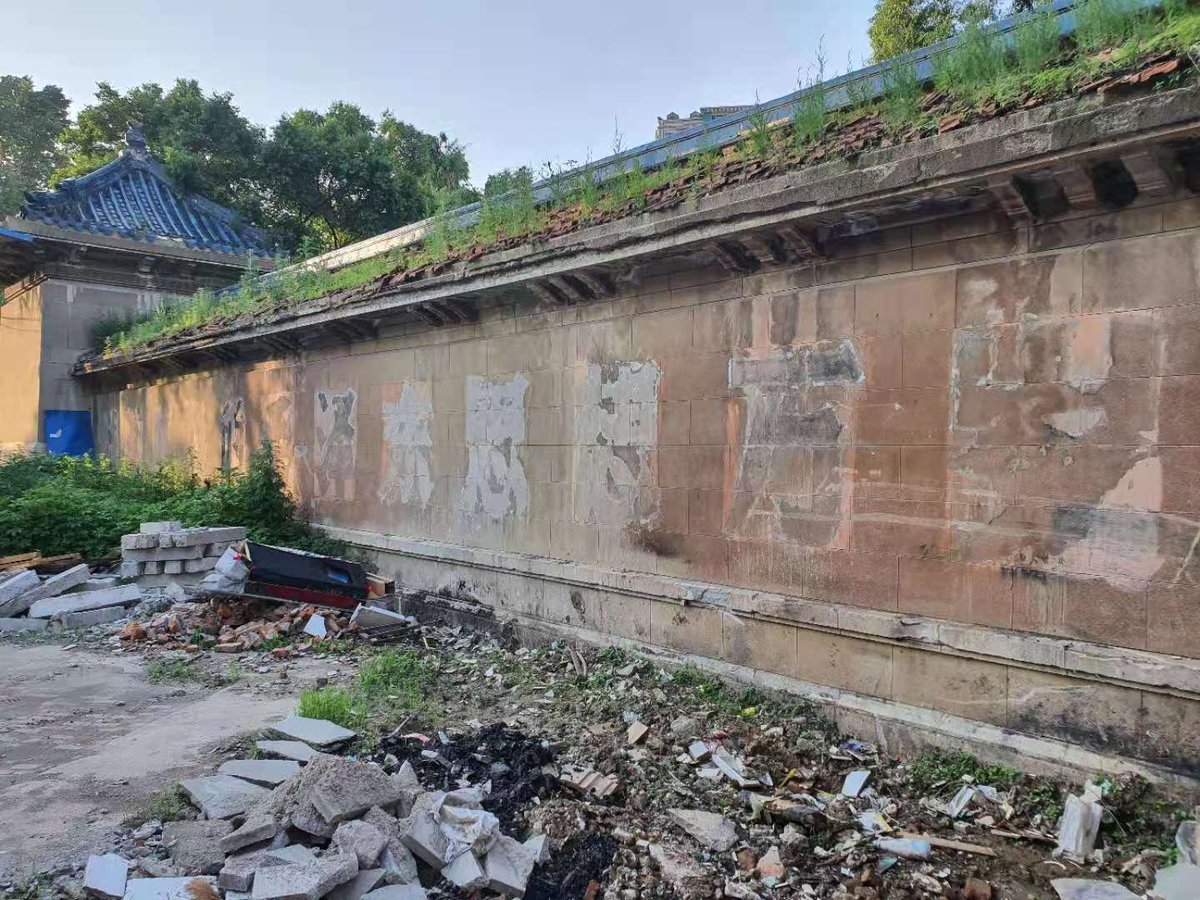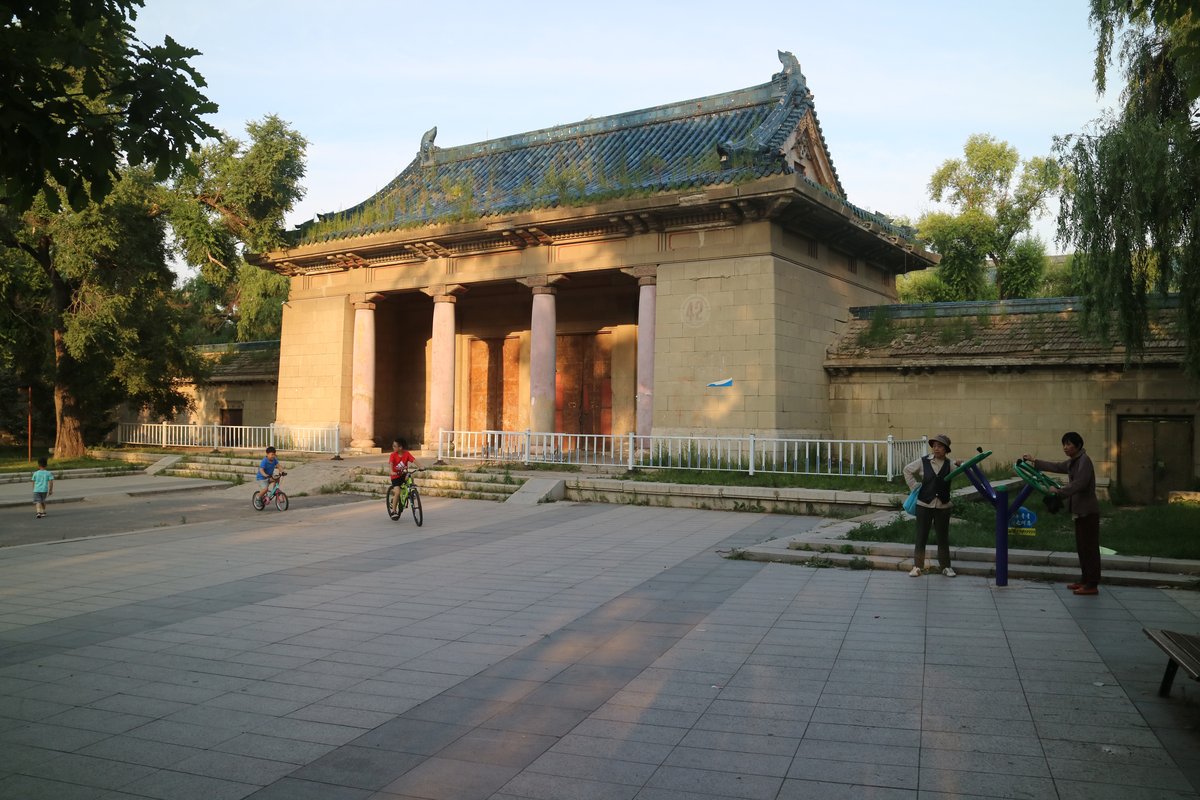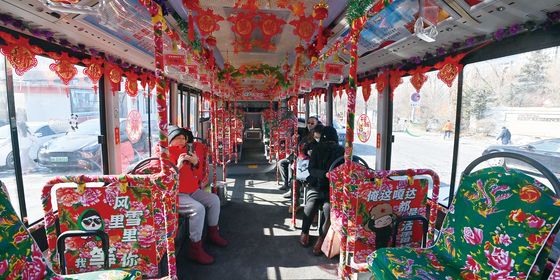In Changchun, Jilin province, a cultural relic remains in disrepair despite decades of attempts at restoration
In the golden light of the evening sun, children laugh and elders exercise in the Changfei housing compound in Changchun, Jilin province, paying little attention to the enormous ruined temple, chipped and weed-strewn, that stands abandoned in the middle of their apartment blocks.
But if they slipped through a gap in the iron railings and tumbled down a steep earthen slope into a sea of bushes, they would see a local resident's carefully-tended vegetable patch in its outer courtyard. Behind this, the stone walls are dribbled with water-stains, and tiles are missing from its striking midnight-blue roof, covered in a thicket of apple-green weeds.
The temple has every reason to be ignored. This is Jiangguo Zhongling Temple, a major religious site from the days of the despised Manchukuo regime, a puppet state nominally ruled over by China’s last emperor, Puyi, but created by the Japanese empire in the 1930s in China’s northeast. It’s a reminder of an upsetting history, of local collaboration and national humiliation—as seen in the hot debate over what to do with its shell.
Like other relics left over from the Japanese occupation, few Chinese seem aware of this enormous crumbling edifice. It does not appear on the Changchun municipal government’s English-language list of tourist attractions, nor on Xiaohongshu or Dianping (apps for travelling millennials scouting out their destination’s hottest sites). “There’s a Manchukuo temple in there?” says my taxi-driver, born and raised in Changchun, as we arrive.
The site is in evident decay. Graffiti has been scrawled on the back walls of the main hall, while fragments of blue roof tiles can be glimpsed in the plantain forest that’s grown through cracks in courtyard paving stones. Within the square-shaped spirit hall (once the holiest part of the complex, forbidden to all except the priests) the floor is caked with dirt, and the walls riddled with cracks.
Oddly, just as we arrive in this hall, a mysterious sliver of the setting sun slices a long rectangle of light into a corner of the room—at the tip of which is a stick of incense and a single red candle, stuck in place and freshly burned, like an offering to some spiritual entity.
This crumbling edifice was completed on September 18, 1940, just in time for the anniversary of the Mukden incident (whereby the Japanese army sabotaged their own railway line near present-day Shenyang in 1931 and blamed it on Chinese guerrillas as an excuse to invade). It was called "The Shrine for Spirits of National Founders," a state-level Manchurian shrine in a grand park built by 170,000 forced laborers. The Emperor Puyi, Japanese citizens, and members of the Manchukuo puppet government and military would attend with regular rituals to honor the 20,000 “martyrs” who had given their lives fighting for the Manchurian Empire since the invasion of 1931 (by 1945, this number had doubled as the Second World War took its toll).
But it was obvious the Japanese were calling the shots. The temple's management positions were filled by Japanese, and it was modeled on the Yasukuni Shrine in Tokyo, dedicated to Japanese war dead. It was dedicated to Amaterasu, the goddess of the sun in the Japanese Shinto religion, from whom the Japanese imperial family claimed descent.
Perhaps that was because of the growing Japanese population in Manchukuo. By 1945, 1.4 million Japanese had migrated to the puppet state, bringing their culture and traditions with them. The puppet government built Japanese-style shrines and temples all across Manchukuo to cater to their spiritual needs. But they were also just another branch of colonization, the Japanese having also built Shinto shrines in other colonized areas like Korea and Taiwan. The state seemed aware of the resentment such a structure caused: A law passed in 1940 stated that “anyone who has acted disrespectfully in the Jianguo Temple shall be sentenced to a fixed-term imprisonment of up to seven years.”
With the fall of the Manchukuo state, the site was gutted and deconsecrated in 1945. While many Japanese temples were destroyed by Chinese, Jiangguo Zhongling Temple was left untouched by the military once it took ownership of the site. Those years can only be seen today through faded slogans around the exterior walls, stating “Long Live Mao Zedong Thought.”
“It hasn’t been demolished so that younger generations can remember our humiliations at the hands of the Japanese devils,” says one elderly local, as she tears up weeds around the perimeter fence.
Today it functions as a warehouse for those now running the site, the Changchun Air Force Academy, which has added an illegal brick structure inside the main courtyard, and a greenhouse attached on the side, growing flowers for the air-base.
Several smaller Japanese sacrificial shrines in Changchun have been well-preserved (often as functional school buildings). But this site remains in decay, despite its importance in the story of the puppet state of Manchukuo.
It’s not for lack of trying. In 2005, the Changchun City Planning Bureau suggested the temple, along with several other Manchukuo sites, be turned into a “National Humiliation Corridor” to act as a warning to modern Chinese. Repair works were twice proposed at the Changchun Chinese People's Political Consultative Conference in 2009 and 2010. In 2015, the Changchun CPPCC group visited the President of the Air Force Academy and agreed to submit an application for the site to become a national-level cultural relic so that state funds could be used for it to be “repaired in time to prevent damage,” and that the site “be opened to the outside world.”
The first of these things happened. It was upgraded in 2019 by the State Council as a site of national cultural protection, making it a place “related to major historic events…that are highly memorable or are of great significance for education.” Under the 2002 Cultural Relics Law, this bans all construction projects and entitles it to government funds for repair and maintenance.
But looking at the decaying structures, it's clear repairs did not take place. Many of the grievances listed in a 2012 paper written by Zhou Wuyi of the Changchun School of Architecture are still valid, including graffiti, plants growing on the roof allowing rain water to seep in, and blue tiles missing from the cloister roof.
Perhaps it is a problem of ownership. The Cultural Relics Law lists that owners are responsible for repair and maintenance of a site—If the owner refuses, the “people’s government at or above the county level can provide rescue and repair,” as seems to have been attempted in 2016. But whether the community want to see the temple refurbished is another matter: “Why would we restore it?” the local says, frowning in frustration, “that would be even more humiliating.”
Yet it appears someone is keeping the flame alive. Who placed the candle in the sacrificial hall, and why, remains a mystery.
All images by Alex Colville







